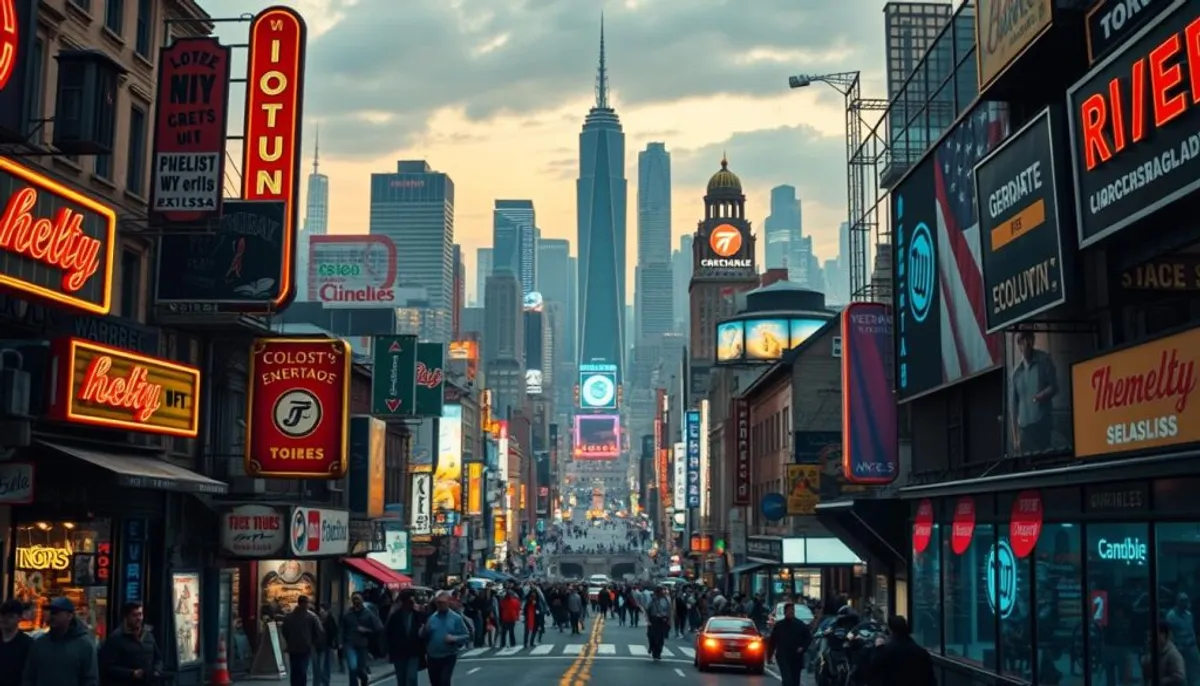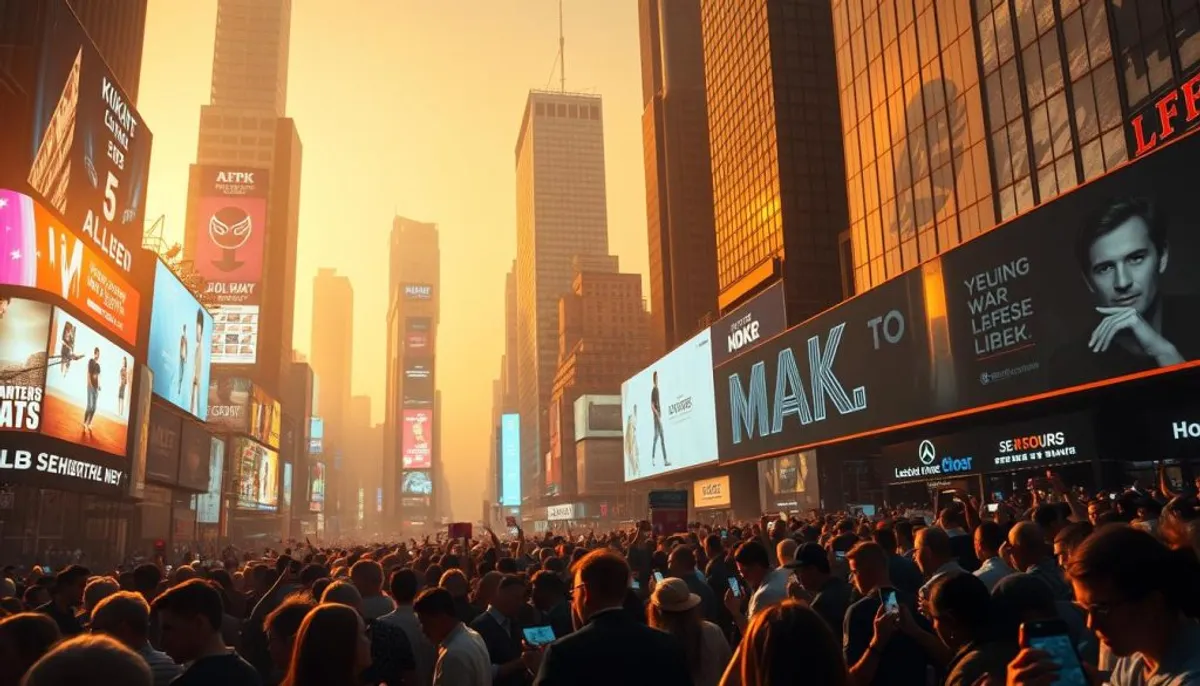The question of what mass culture is leads us to the heart of a phenomenon influencing our current society. This culture, linked to popular culture, includes artistic and cultural expressions accessible to all. It represents a fundamental aspect of our contemporary reality.

The development of mass culture is closely linked to the evolution of the media. In France, the Parisian press experienced spectacular growth, rising from one million copies in 1870 to over five million in 1914. This media expansion laid the foundations for commercial art and today's dominant culture.
Mass culture is distinctly different from high culture due to its wide dissemination and availability. It reflects a consumer society where human interactions are often guided by economic considerations. Mass media play a crucial role in its dissemination, influencing our cultural choices and behaviors.
Industrialization and technological advances foreshadowed the emergence of this culture long before World War II. Press freedom, established in France as early as 1881, encouraged the diversification of cultural content. With the advent of the digital age, mass culture continues to expand, reaching an ever-growing global audience.
What is mass culture
Mass culture emerges with the expansion of mass media. It is characterized by the wide dissemination of standardized cultural products. These products target a broad and diverse audience.
Definition and fundamental concepts
The cultural industry is at the heart of creating and distributing content to entertain the general public. Statistics reveal that 70% of the population regularly consumes mass media. Furthermore, 90% of households own at least one television.
Opposition to high culture
Mass culture is distinguished from high culture by its accessibility and popularity. About 55% of adults prefer popular literature to more intellectual works. This cultural democratization raises debates about the quality and diversity of content.
Role of consumer society
The consumer society is closely linked to mass culture. Mass media shape purchasing behaviors and cultural trends. For example, 80% of marketers plan to adopt targeted digital marketing as their main strategy. This reflects the integration of mass culture into marketing strategies.
| Aspect | Data |
|---|---|
| Daily TV consumption | 3.5 hours |
| Market share of streaming | 60% |
| Revenue from the music industry (streaming) | 75% |
| Perceived influence on social values | 65% |
The historical evolution of mass culture
Mass culture has undergone a profound transformation over the years, significantly influencing our society. Its historical journey illustrates the social and technological transformations of recent centuries.
The origins in the 19th century
The first manifestations of mass culture date back to the 19th century. In France, its development began around 1860 with the emergence of the first widely circulated newspapers. The press plays an essential role in instilling French values. In 1838, the introduction of low-priced popular novels democratized access to literature, marking the beginning of cultural standardization.
The rise of mass media
The 20th century is marked by the explosion of mass media. Radio, cinema, and television became powerful tools for cultural dissemination. Television, which became the primary medium in the 1960s, created a common base of references. This period saw the advent of standardized cultural products, available to all.

Cultural democratization
Cultural democratization accelerated with the expansion of popular leisure activities. Automobile tourism, sports, and amusement parks experienced significant development. The World Expositions, termed the “pleasure industry,” attracted large crowds. This democratization was accompanied by the industrialization of cultural productions, transforming the French cultural landscape.
The evolution of mass culture illustrates a complex process of cultural standardization. This process combines technological innovations and profound social changes.
The media as vectors of mass culture
The media are essential in disseminating mass culture. They have created a common cultural foundation, transcending barriers of age, gender, and social class. This ability to unify is fundamental for the formation of the consumer society.
The written press and its influence
The written press was the first to shape mainstream culture. Between 1803 and 1870, the number of printed copies exploded, rising from 36,000 to one million. By 1945, France reached 15 million daily sales. Despite a decline to 10 million in 1991, it remains a global leader in periodical press consumption.
The advent of audiovisual media
Audiovisual media revolutionized cultural dissemination. Radio and television introduced music genres like jazz and rock. Cinema underwent a major transformation with the first talking film in 1927. Television rapidly developed, increasing from 260,000 sets in 1955 to 9 million in 1965.
The digital age and the Internet
The Internet has disrupted the consumption and sharing of culture. It has enabled global dissemination, fostering enriching cultural exchanges. Mainstream culture has thus adapted to the digital age, offering new opportunities for the consumer society.
| Year | Event |
|---|---|
| 1927 | First talking film: The Jazz Singer |
| 1899 | First long-distance Hertzian transmission in France |
| 1982 | End of the state's monopoly on television channels |
The impact of mass culture on society
Mass culture, this force that shapes our modern society, goes beyond mere entertainment. Since the 1960s, its expansion has been rapid, supported by technological advances and improvements in living standards.
The cultural industry revolutionizes our modes of communication. Magazines like Paris-Match, very popular in the 50s and 60s, illustrate this phenomenon. Posters in the streets and advertisements in the subway disseminate symbols and behavior models, creating a modern mythology accessible to all.

Commercial art profoundly shapes our perceptions. Fashion photography, for example, contributes to standardizing beauty criteria. This standardization of visual signs tends to create ideological conditioning, impacting our values and behaviors.
However, the effects of mass culture are ambivalent. While it democratizes access to information and entertainment, it can also lead to a devaluation of meaning and an inflation of signs. The cultural industry risks producing a certain depoliticization and a standardization of desires within the consumer society.
| Positive aspects | Negative aspects |
|---|---|
| Democratization of access to information | Risk of depoliticization |
| Wide dissemination of cultural content | Standardization of desires |
| Creation of a common culture | Standardization of aesthetic criteria |
The characteristics of mainstream culture
Mainstream culture, or mass culture, is distinguished by its unique traits. It shapes our daily lives through mass media and influences our entertainment choices, while also having an artistic impact on society.
Standardization of cultural content
Mainstream cultural products tend toward uniformity. This standardization facilitates their large-scale dissemination. For example, the Indian film industry sells 3.6 billion tickets per year, illustrating the extent of this phenomenon.
Globalization of cultural practices
Mainstream culture transcends borders. A survey conducted in 30 countries and nearly 150 cities reveals the extent of its influence. The United States still dominates, but India and China are gaining ground. This globalization fosters cultural exchanges while posing challenges to local cultures.
Economic and commercial dimension
Mass culture has become a true industry. The efficiency of the entertainment industries is measured by the number of blockbusters, hits, and bestsellers produced. This commercial dimension strongly influences the creation and dissemination of cultural products.
Mainstream culture, driven by mass media, shapes our relationship with entertainment and cultural products. It oscillates between uniformity and diversity, offering a fascinating ground for studying our contemporary cultural practices.
Conclusion
Mass culture profoundly shapes our modern consumer society. It has transformed our lifestyles and cultural practices, creating a cultural uniformity on a global scale. The rise of media and digital technologies has accelerated its dissemination, making popular culture accessible to all.
Despite criticisms regarding the standardization of content, mass culture has enabled an unprecedented democratization of access to information and entertainment. It reflects the aspirations and values shared by the majority, while stimulating creativity and innovation in many artistic fields.
The future of mass culture remains open. In the face of the challenges of globalization and digitalization, it will continue to evolve. It is essential to remain vigilant about its social and cultural impacts while appreciating its ability to bring people together and create social bonds. Mass culture remains a complex phenomenon, a mirror of our constantly changing times.
RelatedRelated articles


